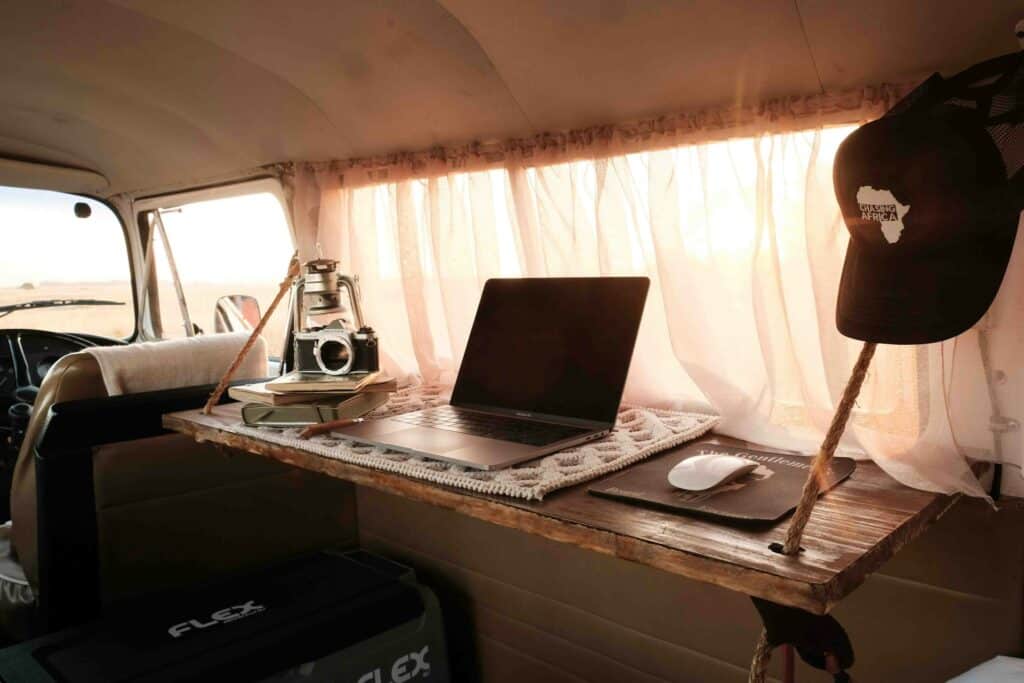When selecting a cellular data plan, how can you make sure you’re choosing the right amount? Opt for too much and you’ll overpay. Opt for too little and you might run out.
Whether you just need to monitor data from your solar energy system, traveling and working from a remote location, or are planning a week-long camping trip, understanding your internet usage is a crucial step in choosing the data package that best fits your needs.
Different internet activities require varying amounts of data.
| Internet Activity Type | Data Used |
|---|---|
| Email (no attachments) | .02 MB/email |
| Email (with attachments) | .3 MB/email |
| Web Browsing | 18 MB/hr |
| Social Media (Facebook, Twitter, etc.) | 50 MB/hr |
| Streaming Music | 97 MB/hr |
| Streaming Video (SD) | .75 GB/hr |
| Streaming Video (HD) | 2 GB/hr |
| Streaming Video (4K) | 6 GB/hr |
| Video Calls | .34 GB/hr |
| Gaming | 40-150 MB/hr |
Use this data calculator to easily estimate your data requirements.
Internet usage scenarios vary widely in their data demands. These are just a few examples that highlight the range of uses and their corresponding mobile data usage. When planning, it’s best to round up estimates to avoid running out of data unexpectedly.

One common data use application is monitoring a solar energy system remotely. Keeping an energy system connected to the internet can ensure you receive important alerts like low battery alarms or other system errors. An internet connection is also required in the event remote tech support or troubleshooting is needed.
A remote installation may need running water, but a leak in such a situation can be catastrophic without the ability to remotely shut off water flow.
Remote video surveillance is often implemented for added security and reassurance.
If the only goal is to monitor a single system’s metrics remotely, a 1 GB data plan will be sufficient, but if many IoT devices are reporting statistics, a video feed is needed, or frequent active monitoring will occur, consider choosing a 2 GB plan. A 3 GB plan would allow users to occasionally access the on-site Wi-Fi for light browsing tasks.

To calculate work-from-home data needs, all internet activities must be accounted for. You may need to correspond via email, conduct research, and attend online meetings.
Work Activities – 5 days per week
After work, you might watch some YouTube videos, stream an episode of your favorite show, and scroll social media. On the weekend, perhaps you stream music while BBQing.
Leisure Activities
This example usage sums to about 135 GB, so a 150 GB plan will cover those uses, and allow a bit of leeway in case of times of increased internet use.
If the work-from-home location is very remote and suffers from poor cell service, we recommend using a dual cellular modem like the Peplink MAX BR2 Pro. In this case, the data needs can be split between two plans: one 100 GB plan and one 50 GB plan. The BR2 Pro can use SpeedFusion technologies* to maximize connection speed and reliability, even in remote areas.
| *Peplink SpeedFusion Technologies |
|---|
| Bandwidth bonding: Combines the speed of multiple connections. This is useful for situations where bandwidth is scarce, such as at a remote site, or in a moving vehicle. |
| WAN Smoothing: Utilizes intelligent algorithms to fill in connectivity gaps, trading bandwidth for greater connection resiliency. Smoothing minimizes latency and reduces the impact of packet loss. |
| Hot Failover: In the event of a WAN disconnection, your traffic is transferred to another connection while maintaining session persistence. This seamless transition means that you won’t experience interruptions in your activities. |
| Traffic Steering: Depending on your deployment, you may need to give priority to certain kinds of traffic while throttling or even blocking others. SpeedFusion gives you granular control of how different kinds of traffic travels within your network |

A family of four wants to take a 5 day vacation in their new RV. Music will be streamed. Movies will be watched. If you’re lucky you might be able to forgo emails for a few days, but that may not always be possible. Hopefully more time is spent enjoying the outdoors or each others company during this trip, but it’s likely you’ll still want to stay connected to the internet to some extent.
Summing it all up, this family will need approximately 46 GB over 5 days. A 50 GB plan will suffice, but if the estimates were on the low side, a 75GB plan may be better suited.
trekData plans have no contract, so this family could simply buy a month of data when needed.
Not all data plans are built the same. A data plan from a single carrier may put you at risk for poor service or dead zones in certain areas. Alternatively, trekData plans are multi-carrier (Verizon + T-Mobile + AT&T), meaning as long as one carrier has coverage in the area, you’ll stay connected.
We make it simple to stay connected with a number of complete kits. All kits include:
Unsure which kit is most appropriate for your needs? Get in touch and we’ll assist through kit selection, system configuration, and optional data activation.
